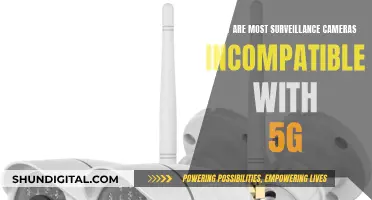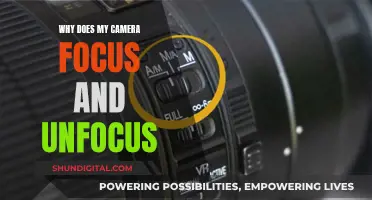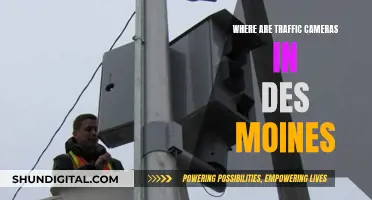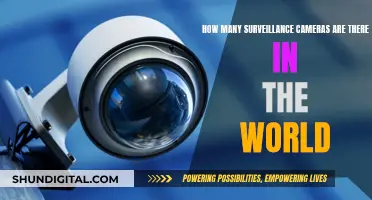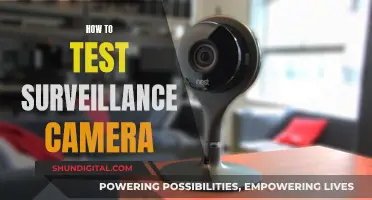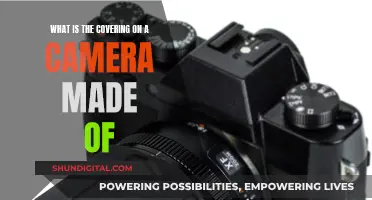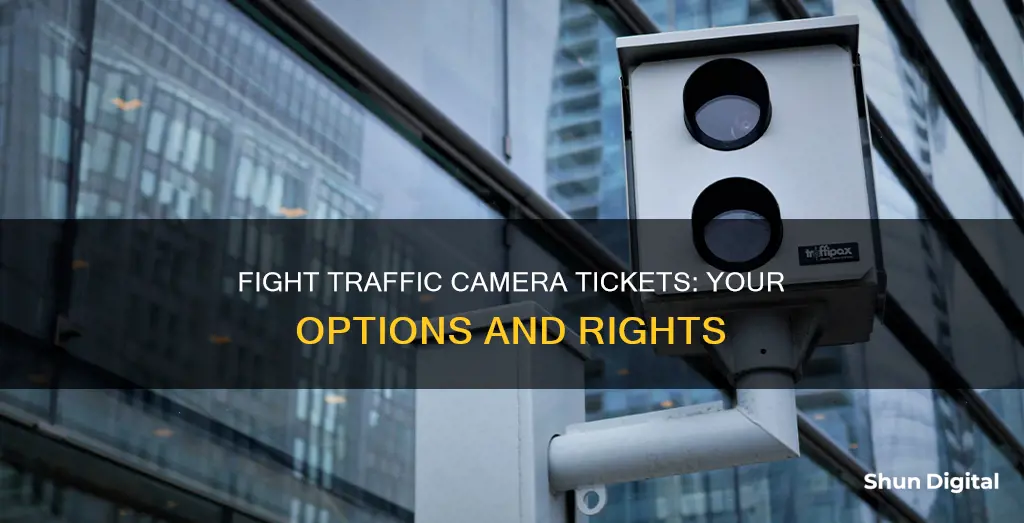
Traffic camera tickets are a common issue for drivers, and while it may seem easier to just pay the fine and be done with it, there are several reasons and methods to dispute these tickets. The first step is to examine your ticket, including the date, time, and location, as well as any photos included with the ticket. It is also important to note that in some states, the registered owner of the car is held liable, while in others, it is the driver. Knowing the relevant laws in your state is crucial for building a strong defence. For example, in some states, warning signs must be posted for traffic cameras, and if they are obscured or missing, this could be a valid defence. Additionally, some states have specific rules about the placement of cameras and the timing of yellow lights, which, if not followed, could result in your ticket being dismissed. Disputing a traffic camera ticket often involves pleading not guilty, either by mail, online, or in person at an arraignment, and building a defence with the help of a lawyer if needed.
| Characteristics | Values |
|---|---|
| How to check if you were driving | Check the date, time, and location of the ticket. Check your own schedule and try to remember if you were driving your car. |
| What to do if you weren't driving | Submit an affidavit form to provide the name and address of the person who was driving. |
| How to check if the ticket is valid | Check if the photo is clear and if it's definitely your car. |
| How to check if the camera is accurate | Request maintenance records for the camera and check the traffic light and speed monitoring system. |
| How to check if the camera is legally compliant | Check if there are warning signs posted within 200 feet of the intersection. Check if the yellow light interval is within the required time limit. |
| How to plead | Plead by mail, online, or in person. |
| How to build a legal defence | Research the law in your area. Check if there are any specific rules about where warning signs must be posted. |
What You'll Learn

Check the ticket details
When you receive a traffic ticket, it's important to carefully check the details to identify any discrepancies that could help you dispute the ticket. Here are some key things to look out for:
Date, Time, and Location:
Check the date, time, and location specified on the ticket. Confirm whether you were driving the car at that specific date, time, and location. This is crucial because, in some jurisdictions, the prosecutor must prove that you were driving the vehicle in that location at the stated date and time. If someone else was driving your car, you typically cannot be prosecuted. However, some states, like New York, treat red-light camera tickets as parking violations, holding the registered owner liable rather than the driver. Therefore, it's essential to understand the specific red-light law in the jurisdiction where you received the ticket.
Reconstruct the Scene:
Try to recall the details of the incident, such as what you were doing, where you were coming from, and any unusual circumstances. For example, you may have been making a legal right turn on a red light when the camera took the photo. If you were performing a legal manoeuvre, you should be able to get the ticket dismissed.
Code Section and Penalties:
Note the exact code section you're cited for violating. Review the law to understand its elements and the associated penalties. Ensure that the penalties listed on your ticket, if any, match those specified in the code section. Remember, it's the prosecutor's responsibility to prove each element of the violation—you don't have to prove your innocence.
Photographs or Videos:
Review any photographs or videos provided with the ticket. Confirm that the vehicle in the media is indeed yours and that the license plate is clearly visible. Blurry or unclear photos can work in your favour, making it challenging to identify your vehicle conclusively. Additionally, if there is no clear image of you in the driver's seat, it may be difficult for the prosecution to prove that you were the driver, especially in jurisdictions that require tickets to follow the driver rather than the registered owner of the vehicle.
In summary, carefully examining the details of your traffic ticket is a crucial step in determining the best course of action for disputing it. By checking the date, time, location, code section, and accompanying media, you can identify discrepancies or legal loopholes that can strengthen your defence.
HDR Camera Mode: Unlocking the iPad's Hidden Potential
You may want to see also

Plead not guilty
Pleading not guilty is the only way to possibly obtain a more favorable outcome. It is your right to dispute a traffic camera ticket and you should exercise this right if you feel you have been unfairly charged. Here are the steps you should take:
- Check the details of the ticket — Confirm the date, time, and location of the ticket. Because camera tickets are sent to the owner of the car, make sure you were driving the car when the ticket was issued. If someone else borrowed your car, you cannot be prosecuted.
- Review the photos and/or video evidence — Confirm that it is your car in the photo and that the photo is clear. Blurry photos may be used as a defense. If there is no photo or video evidence, request this from the law enforcement agency that issued the citation.
- Plead not guilty by the deadline — You can do this by mail, online, or in person at an arraignment. Check your citation for the deadline, which is typically around 30 days.
- Request a formal hearing — When you plead not guilty, demand a full formal hearing or trial. This may require you to attend other hearings such as pre-trial hearings or mediations.
- Research the applicable law — Look for cases in your city or county about traffic cameras, and see if any appellate court decisions have ruled on the legality of traffic camera tickets. Research possible defenses, such as the requirement for warning signs to be posted before a traffic light.
- Request production of documents — Call the local police department or law enforcement agency in charge of the camera used to issue your citation. Request full maintenance records for the camera and traffic light/speed monitoring system to establish that they were regularly monitored and maintained.
- Attend your hearing — Arrive at the courthouse on the day of your hearing with copies of any documents you intend to use as evidence in your defense. Treat the judge and courthouse staff with respect and present your case in a calm and clear manner.
Simplisafe Cameras: Where Are They Manufactured?
You may want to see also

Make your defence
Arrive at the Courthouse
Arrive at the courthouse with plenty of time to spare before your hearing. Aim to be there at least half an hour early. This will give you time to get through security and find the right courtroom.
Be Respectful
Treat the judge and all courthouse staff with respect. Dress as though you are going to a job interview or a religious service. Address the judge as "your honour".
Present Your Case
When it's your turn to speak, explain why you believe you shouldn't have to pay the fine. Present any evidence you have to support your case.
Challenge the Admissibility of the Photo
In some jurisdictions, a red-light camera photo is considered hearsay. Hearsay is an out-of-court statement presented in court to prove the truth of the matter asserted. In this case, the photo is an out-of-court "statement" that the prosecution is attempting to use to prove you violated the traffic law.
Assert Your Right to Confront Witnesses
The Sixth Amendment of the Constitution guarantees you the right to cross-examine witnesses. Unless a witness appears who maintains the record and system associated with the camera, you do not have this opportunity.
Dispute the Authenticity of the Photo
If no one from the company that maintains the camera shows up to testify, object to the use of the photographs for lack of foundation. For a speeding ticket, the company or officer who maintained the camera and the speed detection equipment must appear in court to testify or the photo has no foundation to be admitted into evidence.
Attack the Lack of Evidence
If the photos are clear and the judge allows them, but none of them clearly show you driving, you have a defence that the prosecution cannot prove it was you driving the car.
Raise Other Defences
If your attack on the camera fails and the photos are admitted as evidence, use any other defences you may have. For example, if you were speeding to get to the hospital, you were committing the violation but for a good reason.
Charging Camera Batteries: Portable Power Options
You may want to see also

Request a formal hearing
When you request a full trial, you may also be required to attend other hearings, such as a pre-trial hearing or mediation. Make sure you attend these, but don't accept anything less than a full dismissal of your traffic camera ticket.
If you have to attend an arraignment, plead not guilty and request a formal hearing. Many courts have a form you must fill out to notify the court of how you intend to plead. If there isn’t a form, you may need to write a letter pleading not guilty. Some cities and counties may also allow you to enter a "not guilty" plea online.
If you need an interpreter at the trial, request one at your arraignment. You do not have to present any evidence for your case at the arraignment; you just have to enter the plea. Present the evidence at the actual trial.
If you want to fight the ticket, you must appear in court. Some jurisdictions allow you to respond to the citation either by mail or online, rather than going to a live arraignment in traffic court, for less serious traffic violations such as speeding or running a red light.
Mastering Rocket League Camera Settings: A Guide
You may want to see also

Research the applicable law
Researching the applicable law is a crucial step in disputing a traffic camera ticket. Here are some detailed instructions on how to go about it:
Firstly, look for cases in your city or county concerning traffic cameras. This will give you a sense of the legal landscape and any potential defences you could use. For example, some states have specific rules about where warning signs must be posted for traffic lights. If the warning signs were obscured or not present, this could be a valid defence.
Secondly, check if there are any appellate court decisions that have ruled on the legality of traffic camera tickets in your area. These rulings could provide valuable insights and precedents that may help your case.
Thirdly, besides the camera itself, there might be other defences recognised by law. For instance, some states recognise a necessity defence for speeding, where you can argue that you were speeding to avoid harm to yourself or others.
Finally, be sure to understand the specific traffic laws in your state. Each state has its own set of traffic laws, and knowing the local laws will help you assess whether your route might use traffic safety cameras. For example, some states only allow speed cameras near schools and work zones, so if you were caught speeding in a regular intersection, that evidence may not be enforceable.
Understanding Camera Raw Cache in Lightroom
You may want to see also
Frequently asked questions
The base fines for red light and stop sign violations in California are as follows:
- $100 for running straight through a solid or flashing red light
- $35 for making an illegal right turn at a red light
- $35 for running a stop sign
However, the total fine amount will be higher due to additional fees and surcharges.
Defences include:
- You weren't driving the vehicle
- The photo does not show a clear violation
- There was no warning sign for the red-light camera
- The yellow light interval was too short
First, examine your ticket and check the date, time, and location. Then, review any photos or videos of the incident and confirm that it is your car in the photo. Next, research the traffic laws and check if the traffic light, camera, and warning signs were in working order. Finally, you can plead not guilty by mail, online, or in court.


